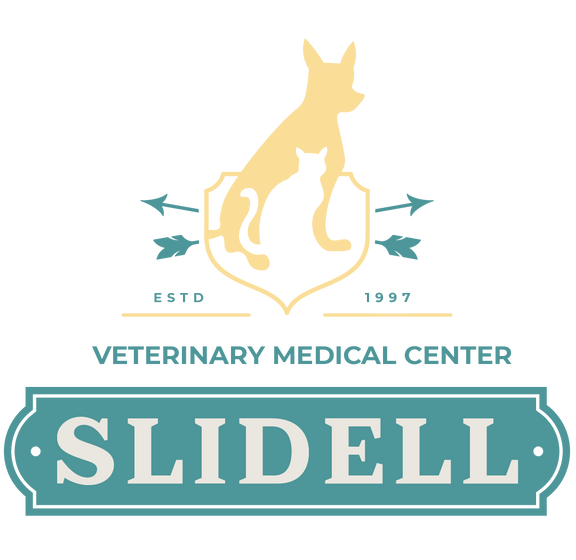You’ve seen the commercials: an official-looking spokesperson in a white lab coat and holding a clipboard says, “Our organic pet cuisine features only four ingredients, none with more than two syllables in their all-natural, non-toxic names!” Camera pans left to show a shame-faced pet owner moaning, “Corn is the first ingredient in my food! And chicken by-product is second. Woe is me!” Scene fades, as sobbing and dramatic music swell. But before you run off to trash Fido’s kibble, take a breath and get past the fear-mongering. Those commercials are marketing hype, not quality nutritional advice, and should be treated with the same skepticism you give to political ads at election time. Let’s talk about what some of those popular pet food terms really mean.
Meat by-product is a traditional villain in many pet food commercials. The sneer in the announcer’s voice makes you imagine that by-products are the hair, feathers and manure-covered feet hosed off the slaughterhouse floor at the end of the day. Not true. The Association of American Feed Control Officials (AAFCO) defines meat by-products as “the non-rendered, clean parts, other than meat, derived from slaughtered mammals. It includes, but is not limited to, lungs, spleen, kidneys, brain, livers, blood, bone, partially de-fatted low-temperature fatty tissue, and stomachs and intestines freed of their contents. It does not include hair, horns, teeth, and hoofs.”
Many human carnivores want only muscle tissue, and a little bit of fat for flavor (steak, or burgers, anyone?). But that leaves a lot of good food on each slaughtered carcass. The organ meats (kidney, liver, etc) are in fact more nutritious than the prime cuts of beef you crave. Mince up all the by-products, mix them together, and you have the basis of highly nutritious pet food. You should be cheering, rather than sneering, at by-products.
Grains are the new, trendy villain in the pet food world. If you read the scary blog posts, grains are poor-quality fillers responsible for allergies, dull coats, bad breath, and obesity. Again, not true. Just because Fido and FooFoo Kitten are carnivores doesn’t mean that they can’t get nutritional value from plants. Meat and other animal tissues do have some essential amino acids and other nutrients not found in plants — therefore, you can’t make a cat vegetarian — but grains like wheat and corn are highly digestible sources of carbohydrates, protein, and vitamins. Indeed, if you watch FooFoo Kitten devour that mole or mouse she caught in the yard, it’s often the innards that go first, before any “meaty bits.” And what’s in rodent innards? Plant matter!
High-carbohydrate diets are often cited as a major contributor to human obesity, so many pet owners find it logical to feed grain-free pet foods to keep their pets trim and healthy. But pets and people have different protein/carbohydrate requirements. The proportion of protein that a healthy cat needs would increase the risk of cancer and metabolic diseases of a human. Grain-free is not the same as low-carb. Potatoes, apples, and peas are common substitutes for grains, so you can actually end up with grain-free diets that are high in carbohydrates. As to allergies, “good” ingredients like beef, chicken, lamb, rice, or dairy are statistically just as likely, maybe more so, to cause allergies, as are the “evil” ingredients like corn, wheat, or soy. It all depends on your pet’s individual immune system.
“All-natural,” “holistic” and “organic” are sexy terms that often don’t have any real impact on nutritive value, and may have no real meaning at all. AAFCO uses the USDA definition of organic, which forbids synthetic fertilizers, sewage sludge, irradiation, and genetic engineering in production. That sounds reassuring, but it doesn’t necessarily mean organically produced food is safer or more nutritious than conventionally produced food. (The manure used in organic farming is still poop; the sun shining down on organic crops is a form of ionizing radiation.) One can argue that organic farming practices are better for the environment; if that’s why you want to feed organic pet food products, I have no real argument there.
I really dislike the term “natural.” It sounds all frilly and pretty and happy, but it’s often useless for any practical purpose. AAFCO defines natural as “derived solely from plant, animal or mined sources, either in its unprocessed state, or subject to physical processing, heat processing, rendering, purification, extraction, hydrolysis, enzymolysis or fermentation, but not having been produced by or subject to a chemically synthetic process and not containing any additives or processing aids that are chemically synthetic except in amounts as might occur in good manufacturing practices.” WOW!
Now, I’m not sniping at AAFCO. All the popular definitions of ‘natural’ are so broad as to be useless. And of course, there are many natural things that are disgusting, toxic, or dangerous (roadkill, sawdust, category 5 hurricanes, bird poop, and being eaten by a bear come to mind; all quite “natural, but I’d just as soon avoid the lot). In addition, many man-made, “chemical” things can be quite beneficial in foods (certain vitamins, minerals, and preservatives).
So what should you be looking for when selecting a pet food? Consider the form of food. Kibble, cans, and pouches all have their pros and cons. Choose the form(s) that you and your pet prefer, with advice from your veterinarian. Ignore the pretty pictures and catchy slogans on the front of the bag. Turn it over and look for the AAFCO statement. Ask your veterinarian if your pet has special nutritional requirements. An average, healthy adult dog or cat can do okay on many name-brand pet foods you can find in the grocery store. Premium diets, generally found at veterinary hospitals and feed stores, are a higher-end alternative and have their advantages. Puppies/kittens, aging pets, and pets with health problems like kidney disease, diabetes, or food allergies may need special diets. Go to the manufacturer’s website to find more information on manufacturing processes or ingredient sources. You may need to call them, but any reputable manufacturer will be happy to talk to you. Feed a life-stage-appropriate diet, according to the label directions, and see how your pet does on it for a couple of weeks. Happy and active and maintaining a healthy weight, or growing appropriately, in the case of a puppy or kitten? Great! If not, adjust how much you’re feeding or gradually switch to different food. Every pet’s an individual, so there can be a bit of trial and error involved in finding his “ideal” food.
Avoid the hype! The American Veterinary Medical Association website, www.avma.org, has oodles of good information on selecting pet food. So do me a favor. The next time you see one of those anxiety-filled pet food commercials, roll your eyes and change the channel because now you’re too well-informed to fall prey to their nonsense.
P.S.: There’s a lot of hype about having “real meat” listed first on the ingredient list. Since ingredients are listed in weight order, it seems obvious that having, say, chicken listed before corn is a good thing. And I agree; I generally like the idea of most of my dog’s nutrition coming from animal sources. But wait a second. A lot of the weight in meat is from water. Grains have a much lower moisture content, so pound-for-pound you get more energy from corn than chicken! Meat meal (which is ground animal tissue without all that water) is a concentrated source of protein. A pet food labeled “corn, chicken by-product meal” may actually be significantly more nutritious than a pet food labeled “chicken, corn.” As Mike Brady said, “Caveat emptor” – let the buyer beware!

